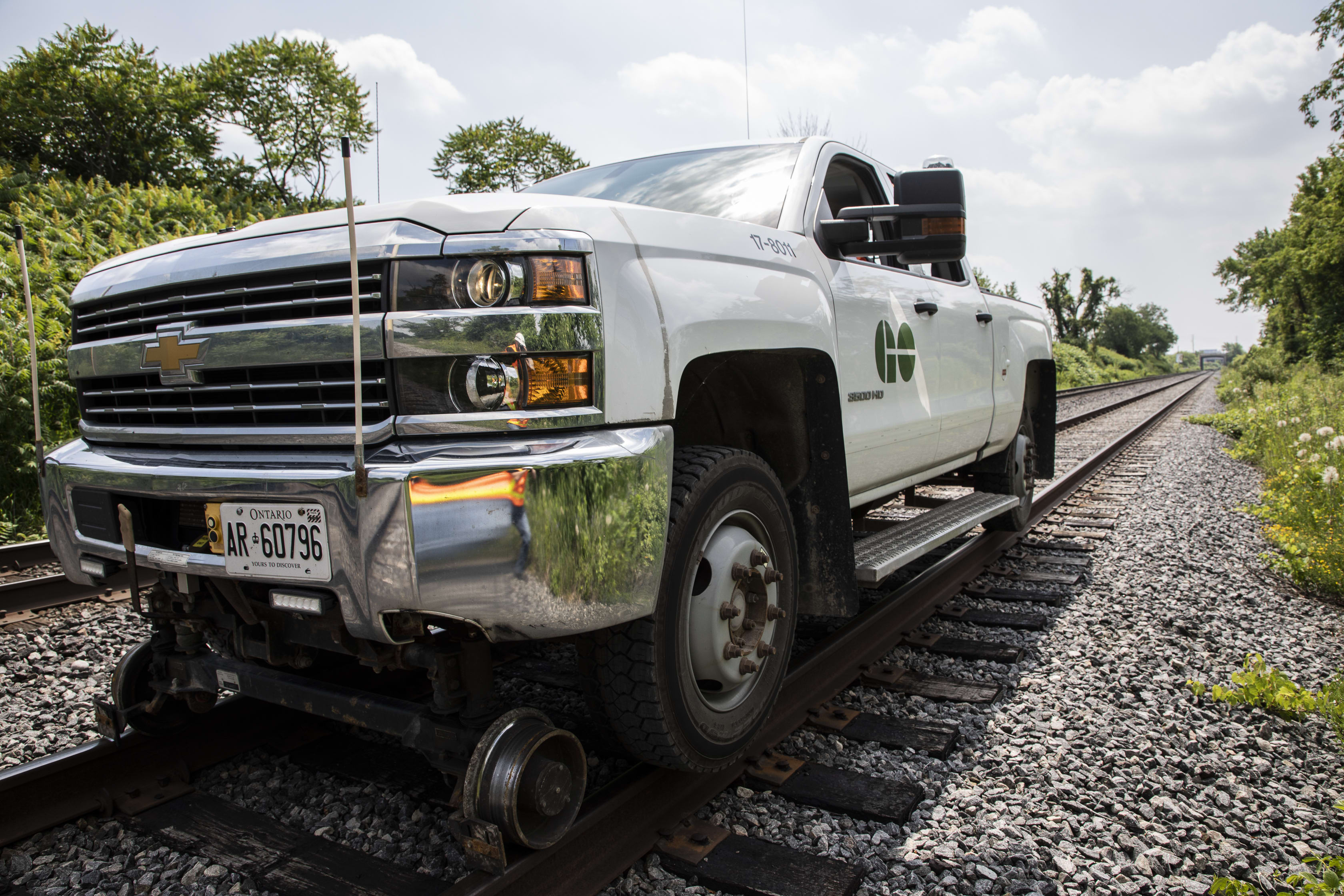Tracking the Heat and Riding the Rails
How Metrolinx ensures its rail infrastructure is resilient to extreme weather.
Jul 18, 2019
Perched behind the steering wheel of a specialized pickup truck equipped with train wheels, Kevin Scott’s eyes carefully scan the sections of track he’s cruising along on GO Transit’s Barrie Corridor just north of Maple GO.
Scott is a track specialist with Metrolinx and when the summer sun starts to scorch the Greater Golden Horseshoe, he and his colleagues hit the roads with their high-rail vehicles to conduct important safety procedures called heat patrols.
“Essentially, what we’re looking for are imperfections in the steel caused by heating and expansion,” says Scott. “In the summer the heat changes quickly. The sun, it can really play games with the track.”
During prolonged periods of heat with temperatures above 30°C, the steel tracks can become stressed and create what are often referred to in the rail industry as “sun kinks.”
These stress spots can make it unsafe to run trains at high speeds and that’s why it’s normal practice for all railways in Canada to issue slow orders to reduce the risk of track damage.
Heat-related delays are frustrating for customers, which is why Metrolinx takes many proactive steps to ensure GO Transit rail infrastructure exceeds safety standards and performs well in all kinds of Canadian weather conditions.
One of the most significant proactive steps was taken back in 2016. After analyzing decades of climate data, Metrolinx made a decision to change the way crews install new sections of track.
By pre-heating the steel to about 38°C, Metrolinx found the rails actually became less susceptible to heat-related problems. As a result, GO trains can operate much faster and more reliably on Metrolinx-owned sections of the rail network. On some corridors it’s up to 30 km/h faster.
“Once you’ve made your standard exceed someone else’s you’re held to that new standard,” says Scott. “Making ours higher makes it so we’re better prepared for whatever (weather) could happen.”
One of the other ways Metrolinx monitors the heat around its roughly 500 kilometres of track is through the use of special detectors. These high-tech safety devices are strategically placed around all rail corridors to let train crews and the Metrolinx Network Operations Centre know, among other things, when the tracks are getting too hot. This is done by monitoring the ambient temperature around the device.
“We are continuing to invest heavily in our rail infrastructure,” says Duwayne Williams, Metrolinx vice president of engineering and asset management. “Our various departments are always looking for ways to improve the safety and reliability of our assets and we’re constantly researching new methods of managing our tracks throughout the hot summer months.”
Williams explains that Metrolinx is currently exploring various techniques used by other rail networks across the world – such as implementing new remote monitoring technology and exploring new ways to inspect track using autonomous tools.
Other jurisdictions have also experimented with techniques that include painting the track white. When asked about implementing this idea at Metrolinx, Williams explains that while results show that particular technique does provide some thermal benefits, it also creates a completely different set of challenges.
Transport Canada requires GO Transit to conduct ultrasonic testing of the rails twice a year (in the spring and fall) to ensure there are no major flaws in the steel. However, because of the durability and strength of the paint that’s needed to coat the track, it creates challenges for the equipment used to test the strength and integrity of that steel. Painting the rail white can also create challenges for the crews who are trained to spot potentially hazardous rail defects.
Williams says while Metrolinx does continue to explore all options, the number one priority is to ensure the network remains safe for all customers.
As for all those track inspectors who brave the heat, ensuring all GO Transit customers get to their destinations safely – Metrolinx also ensures it monitors them as well. That includes making sure workers have adequate breaks indoors and remain hydrated at all times.
GO Transit customers are also reminded they should always travel with water – and are encouraged to stay informed about any heat-related delays by signing up for On The GO alerts, and by following the line specific handles on Twitter.
by Matt Llewellyn Spokesperson
